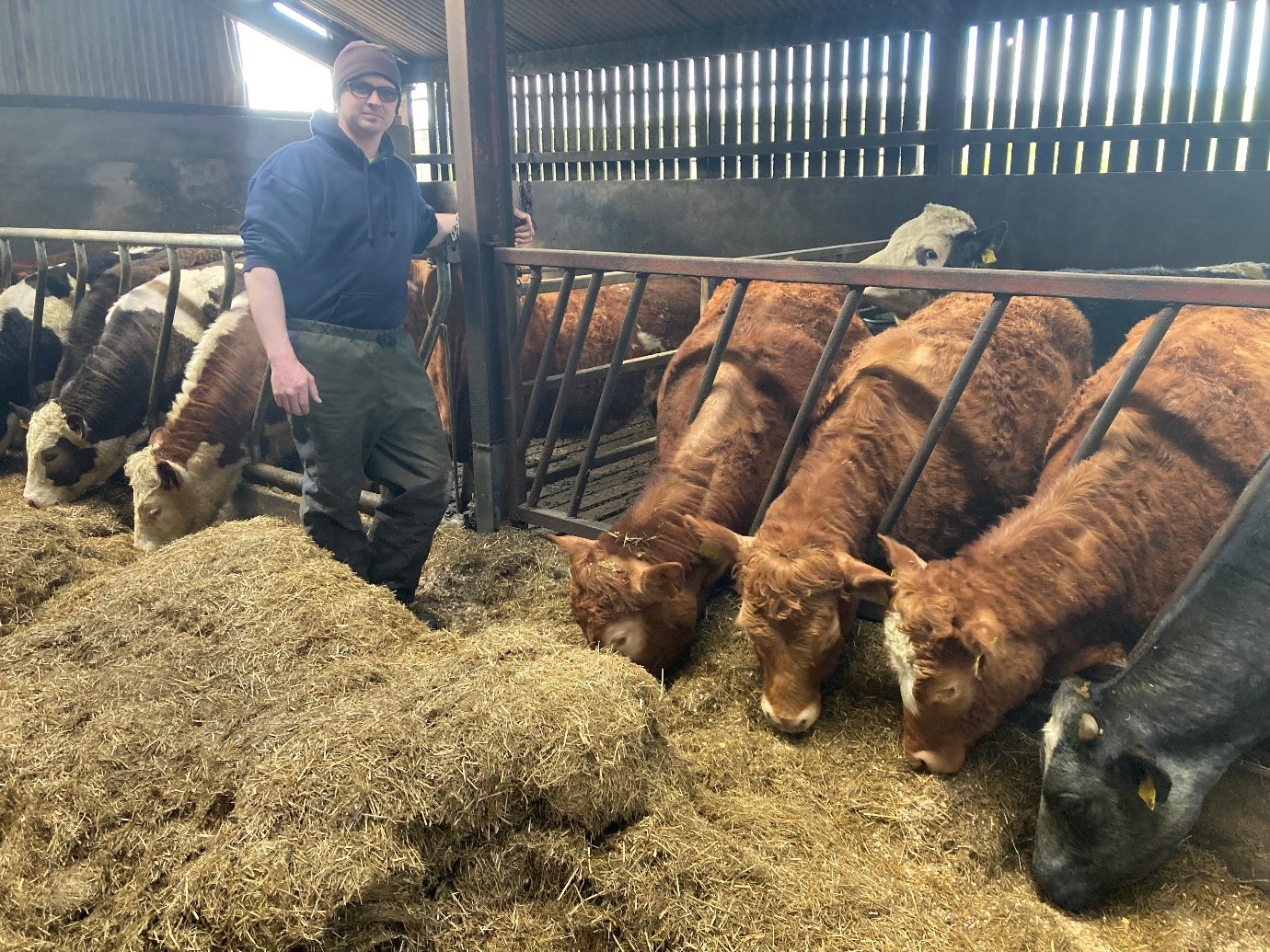COLLEGE of Agriculture, Food and Rural Enterprise (CAFRE) beef and sheep adviser, Kevin McGrath, this week caught up with Michael McCann, a full-time suckler farmer from Altamuskin, which lies between Sixmilecross and Ballygawley.
Michael is an active member of a Suckler Cow Business Development Group (BDG), with a keen interest in developing his farm business.
Most of the grazing platform is on steep ground with soils mainly consisting of either peat or clay. Over the last number of years, there has been a programme of drainage, reseeding and fencing on his most productive land. Soils have been analysed and deficiencies corrected.
Michael achieves good production from his swards through the use of drainage, reseeding and nutrient management.
To date, he has been operating a five-to-seven day rotational grazing system. This has been working well in practice but he now intends to take a step further by reducing the size of the paddocks in order to improve grass quality and quantity. He has acquired a plate meter and is in the process of signing up to grass budgeting software.
CALVING
The suckler herd is spring calving with all calves sold as weanlings, except those being kept as replacements. All cows are bred to Charolais and Simmental stock bulls. Bulls are bought based on their estimated breeding value (EBV), focusing on traits which will improve the herds performance. Replacement heifers are a mix of Limousin and Shorthorn breeding. All heifers were artificially inseminated naturally between March 15 and April 15. Heifers that have not cycled by April 15 will be synchronised using fixed time AI.
Cow fertility is also an important focus on the farm. Michael acknowledges improvements are required with the herds calving index averaging 382 days over the last three years. A strict culling procedure is in place with older and underperforming cows removed.
Heifers are calved at 24 months, to an easy-calving AI bull. To achieve two year old calving successfully, Michael had to set growth performance targets. Cattle are weighed regularly, recording live weight gains. Only heifers that achieve the minimum 60 per-cent of the mature cow weight will be served at 15 months. All other heifers are removed from the herd. The heifers calve down at 85 per-cent of the mature cow weight, for example for the 650kg cow, aiming to calve down at around 550kg at 24 months. Michael focuses on giving his first calving heifers preferential feeding from first calving down to service again, running these heifers as a separate batch from the main herd.
FOCUS
Efficiency, output and costs are Michael’s main focus on the farm. He undertakes CAFRE benchmarking annually, which allows him to compare his farm performance year on year whilst also comparing his results against other farmers. The benchmarking figures also allow Michael to determine areas of the business that are working well or areas where improvements need to be made. This ensures better planning and decision-making going forward.
Michael is very positive about his BDG membership, saying, “I joined to improve myself and learn from other farmers’ experiences within the group. I have introduced new technologies on to the farm with the aim of increasing output and reducing cost. I am now keen to measure farm performance with the aim of improving efficiency.”







